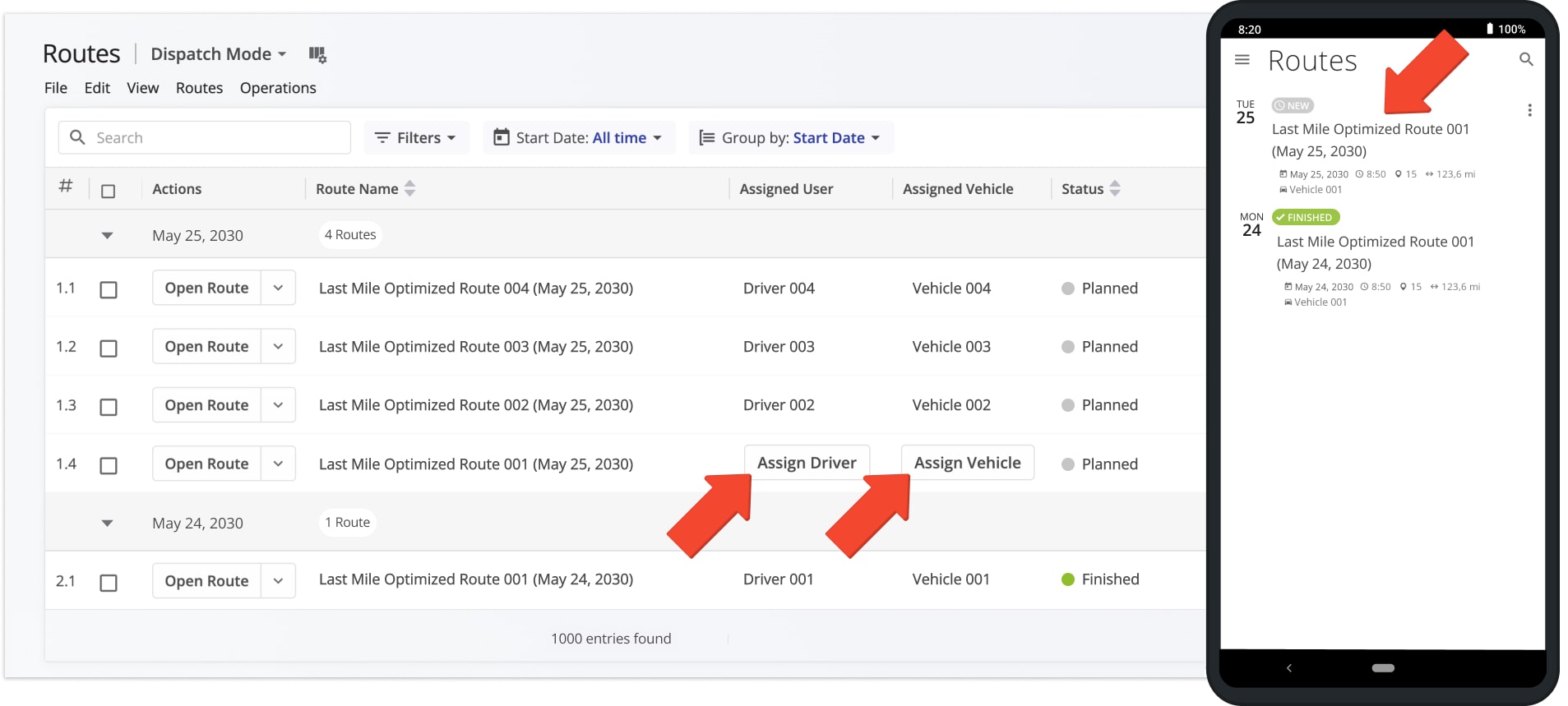Orders Map Routing – Plan Customer Order Routes On The Interactive Orders Map
Route4Me’s ERP Order Management and Routing Software helps medium and large last mile businesses automatically import orders from CRMs and other systems, and easily add, upload, scan, sort, and schedule millions of orders. The interactive Orders Map provides a visual overview of all orders, allowing you to plan order routes, create Order Territories, add Avoidance Zones, and route orders directly from the interactive Orders Map. Learn more about Route4Me’s Order Territories Route Planning and Optimization, Orders List Routing, Order Groups route planning, and Grab & Go driver route planning via barcode scanner.
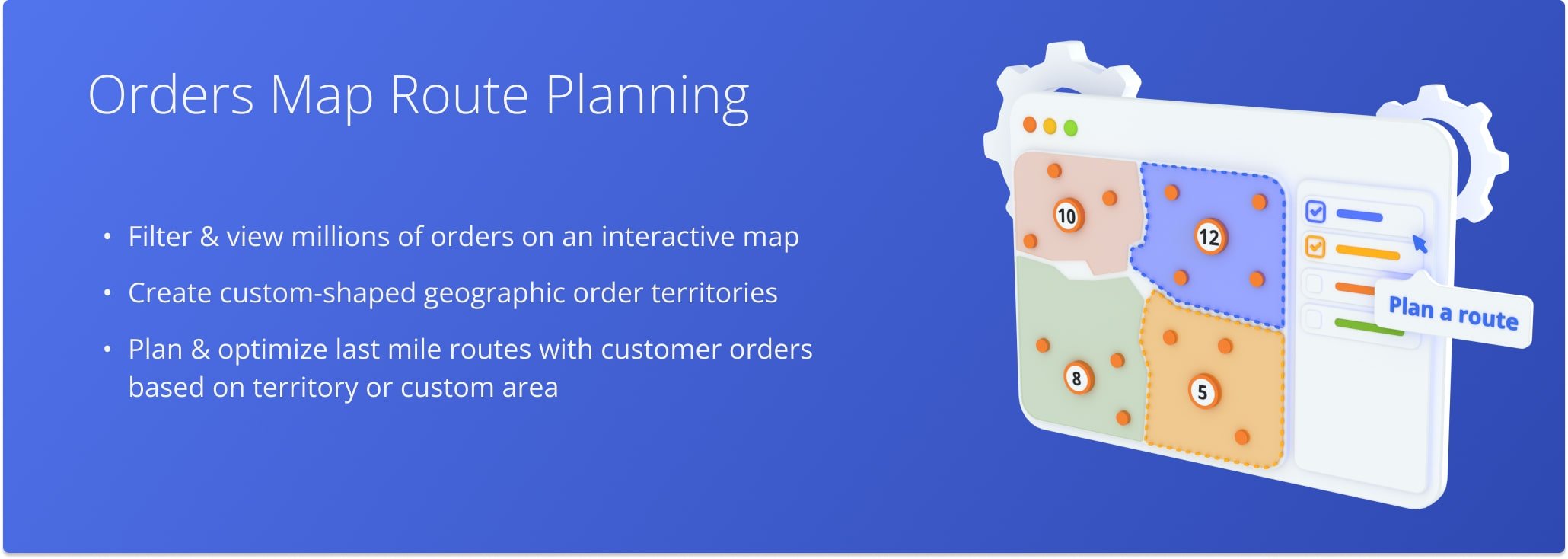
Table of Contents
Display Orders On Map – Filter And Sort Orders On Interactive Map
The interactive Orders Map is integrated into your Orders Page. To access your Orders Page, click “Operations” in the Navigation Menu and select “Orders“. Then, click the Orders Map Icon to open the map.
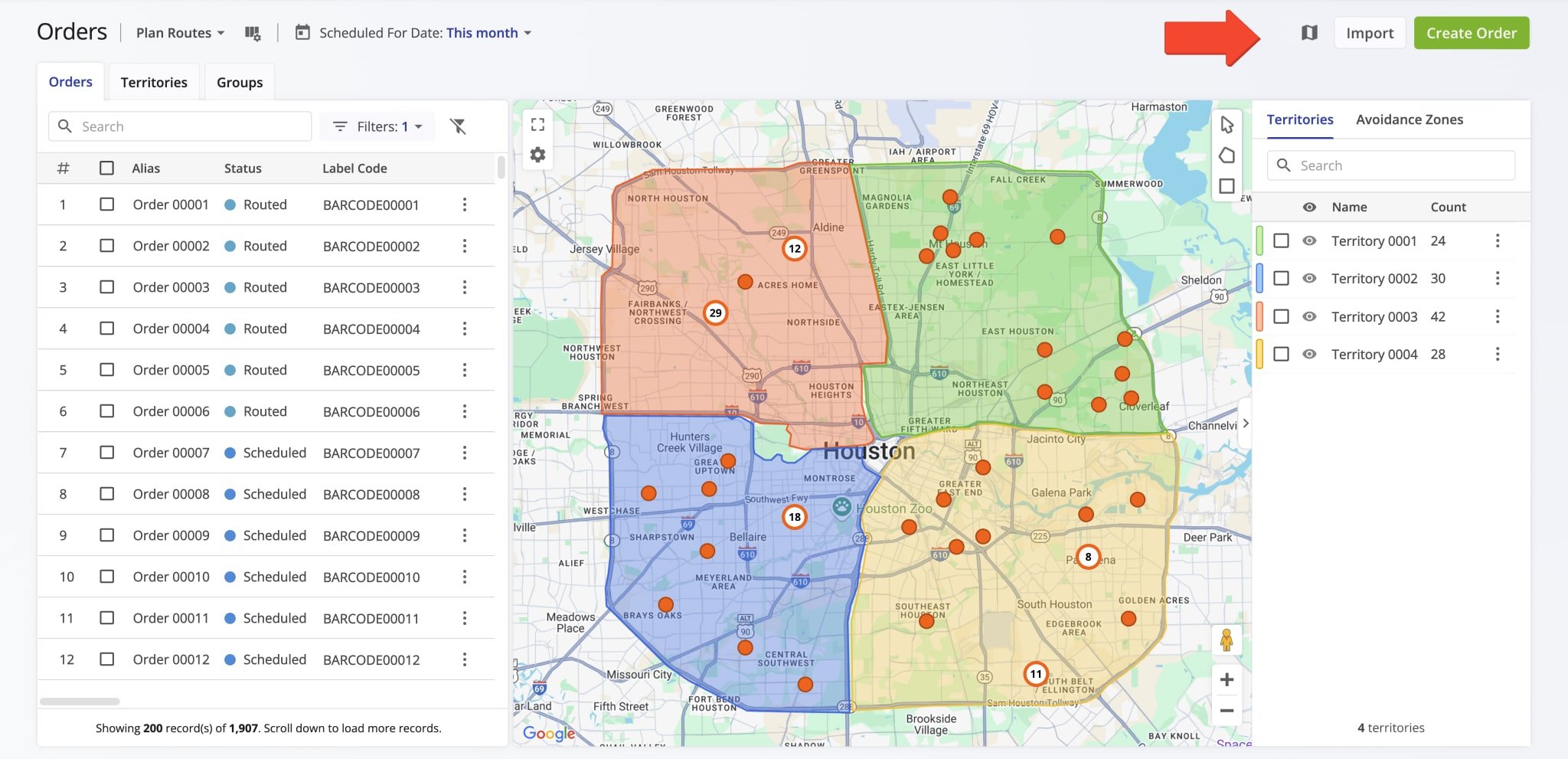
For efficiency, the Orders Map displays only the orders matching your Orders Page filters and view modes (e.g., by address, scheduled date, customer name, label code, etc.).
You can also use View Modes that group orders by status and purpose. For example, the “Plan Routes” View Mode shows only orders available for planning or inserting into routes.
To filter orders for the Orders Map:
- Click “Plan Routes” above the Orders List and select the preferred View Mode.
- Click “Scheduled For Date” and select the date range type and dates.
- Click “Filters” to filter orders by additional attributes or details.
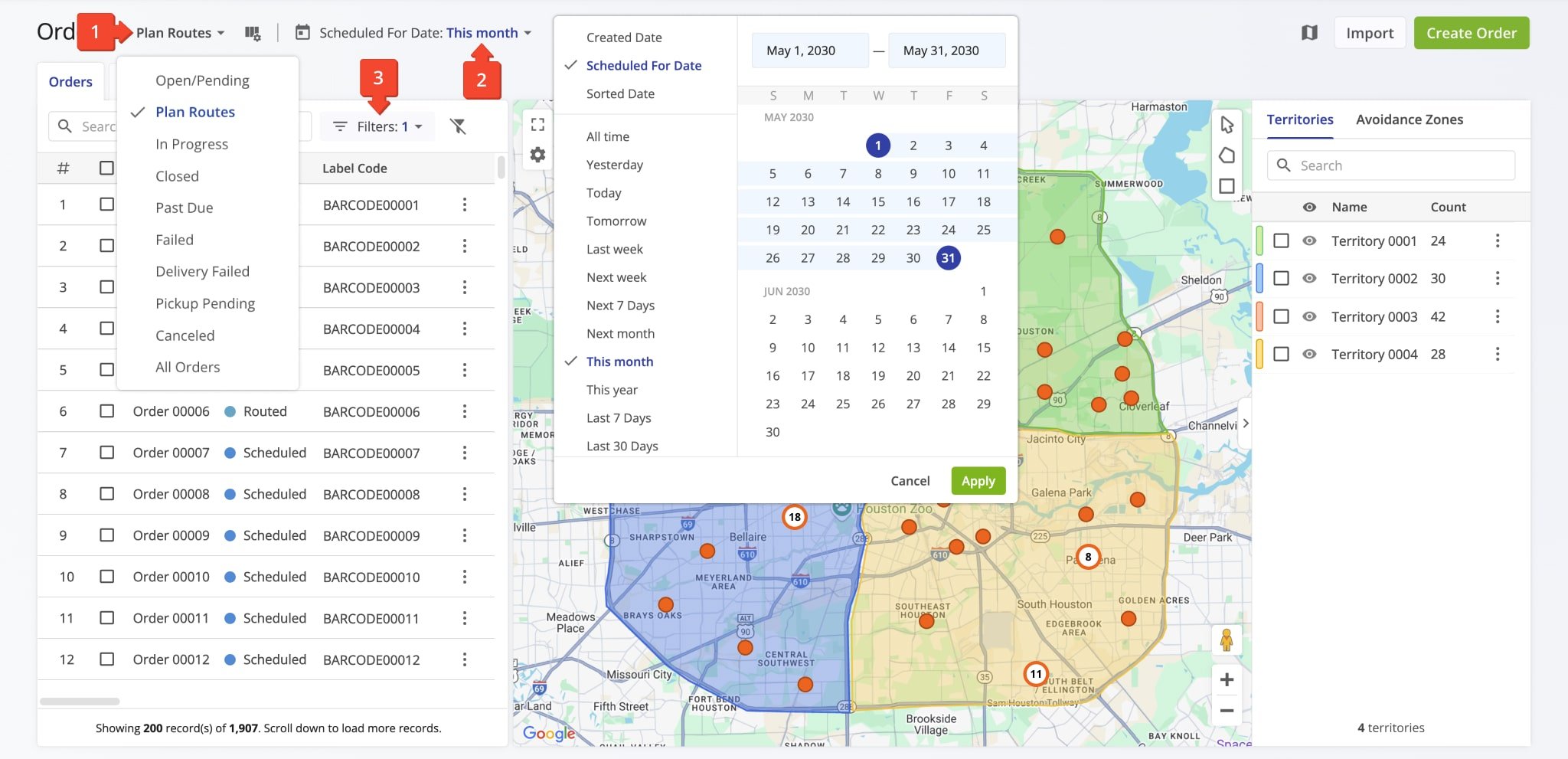
Plan Routes With Orders – Routing Customer Orders On The Route Planning Orders Map
The interactive Orders Map helps you easily plan order routes by drawing shapes around orders on the map. Click the Polygon or Rectangle button, or right-click anywhere on the map to choose a shape tool.
Then, draw a shape around the orders you want to include in a route. Right-click the shape and select “Plan Route”. Route4Me will open the Route Planning screen and automatically import the selected orders into a new route.
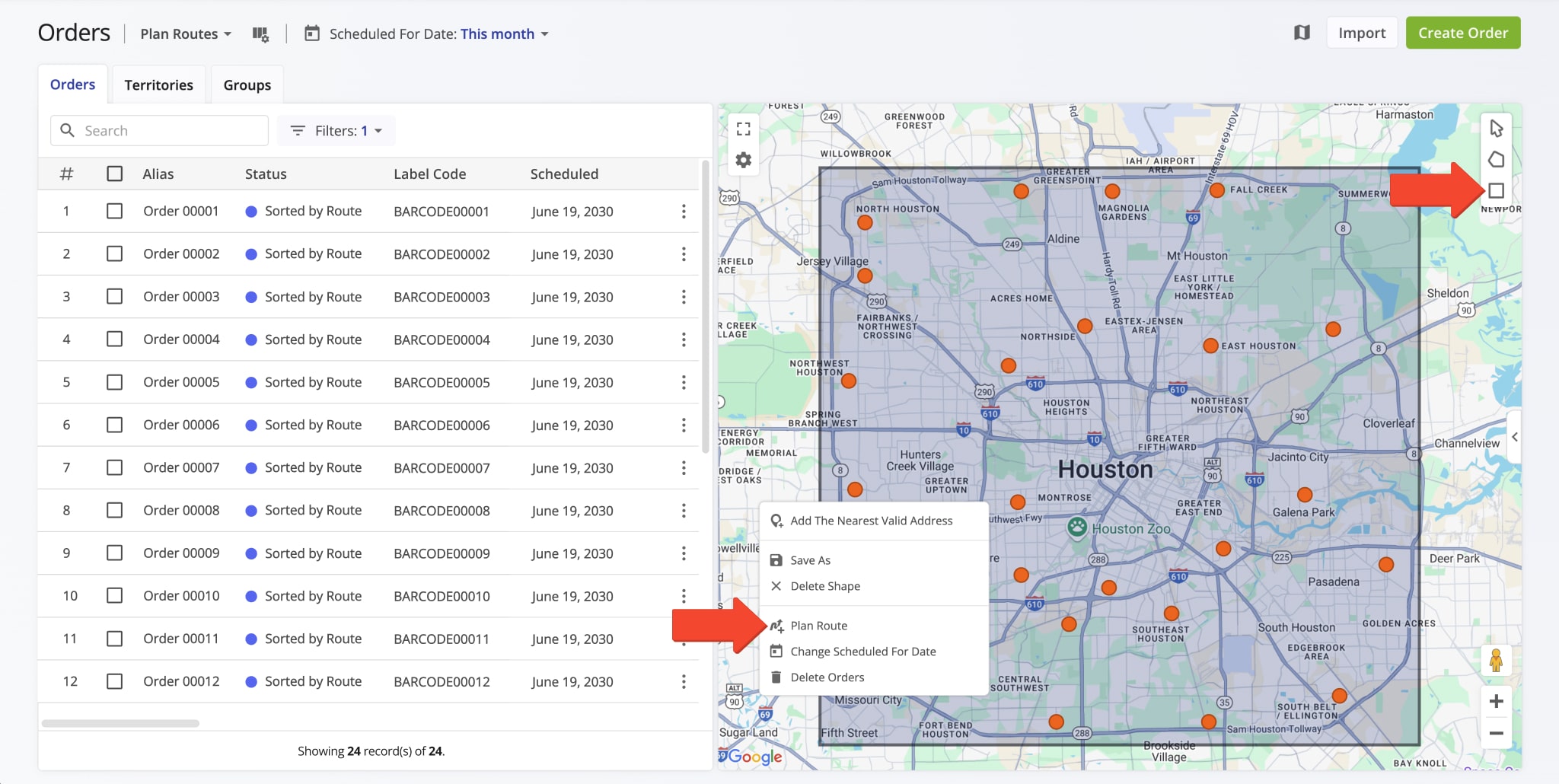
Plan Routes With Territories – Create And Plan Routes With Order Territories
You can create and route Order Territories on the Orders Map as follows:
- Click the Polygon or Rectangle button in the top right corner, or right-click the map and choose a shape.
- Click and drag to draw a rectangle, or click to add points for a polygon.
- After drawing the shape on the map, click the Save Icon next to “New Shape“.
- Select “Territory” in the “Type” field, enter a unique name, and choose a color using the Paint Bucket Button. Click “Save” to finalize.
Territory names are searchable, and all orders within the territory are automatically associated with it. These orders be used for Order Territory route planning if they have the correct order statuses. Learn more about managing Order Territories on the map.
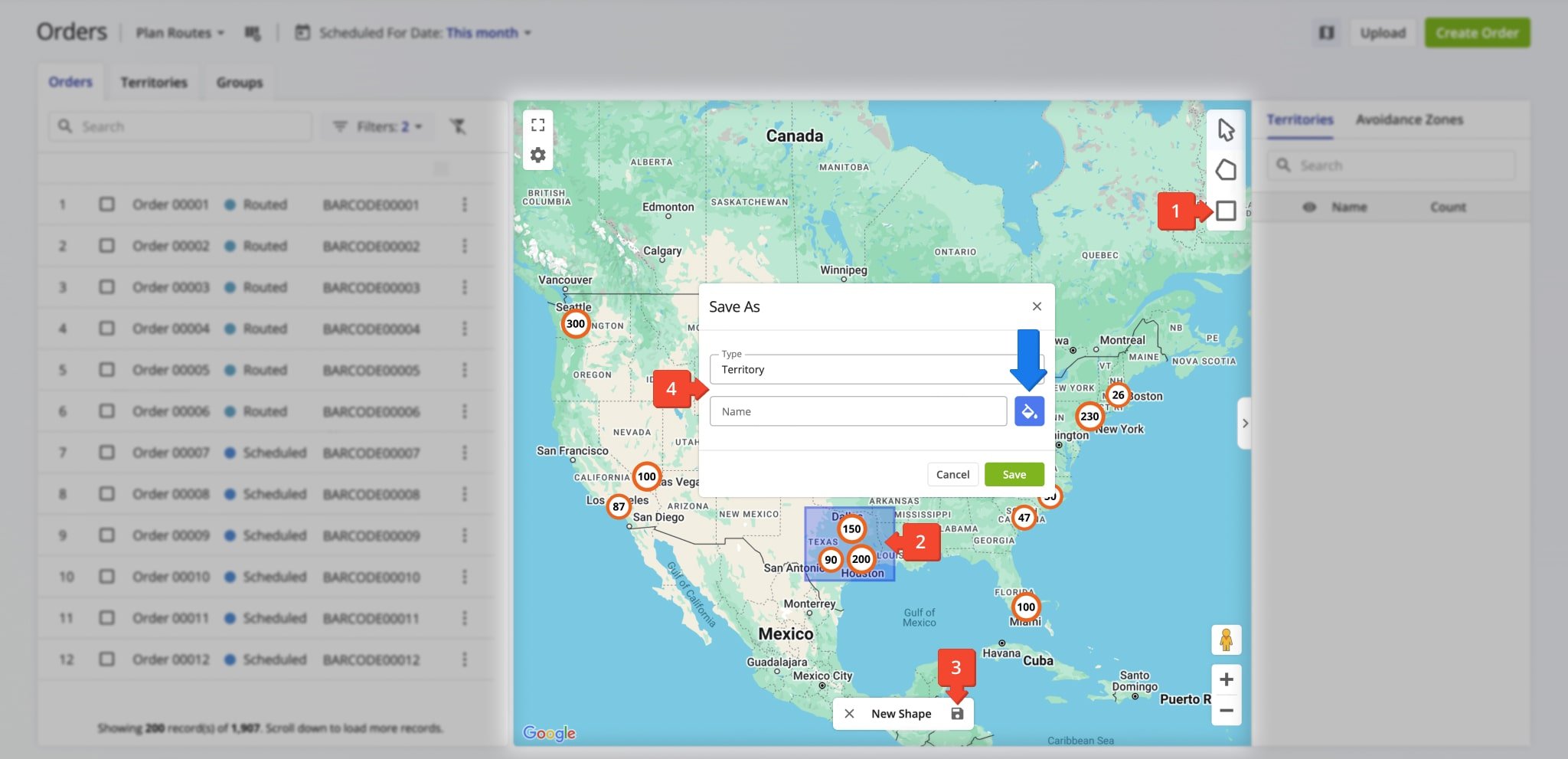
Plan Separate Routes – Route Individual Territories Without Overlapping Territory Borders
To plan an Order Territory route on the Orders Map, click the Three-dot Icon next to the territory and select “Plan Route” from the menu.
Route4Me’s Enterprise Order Routing Software will automatically open the Route Planning page and import the selected orders into a new route, which will then open in the Route Editor.
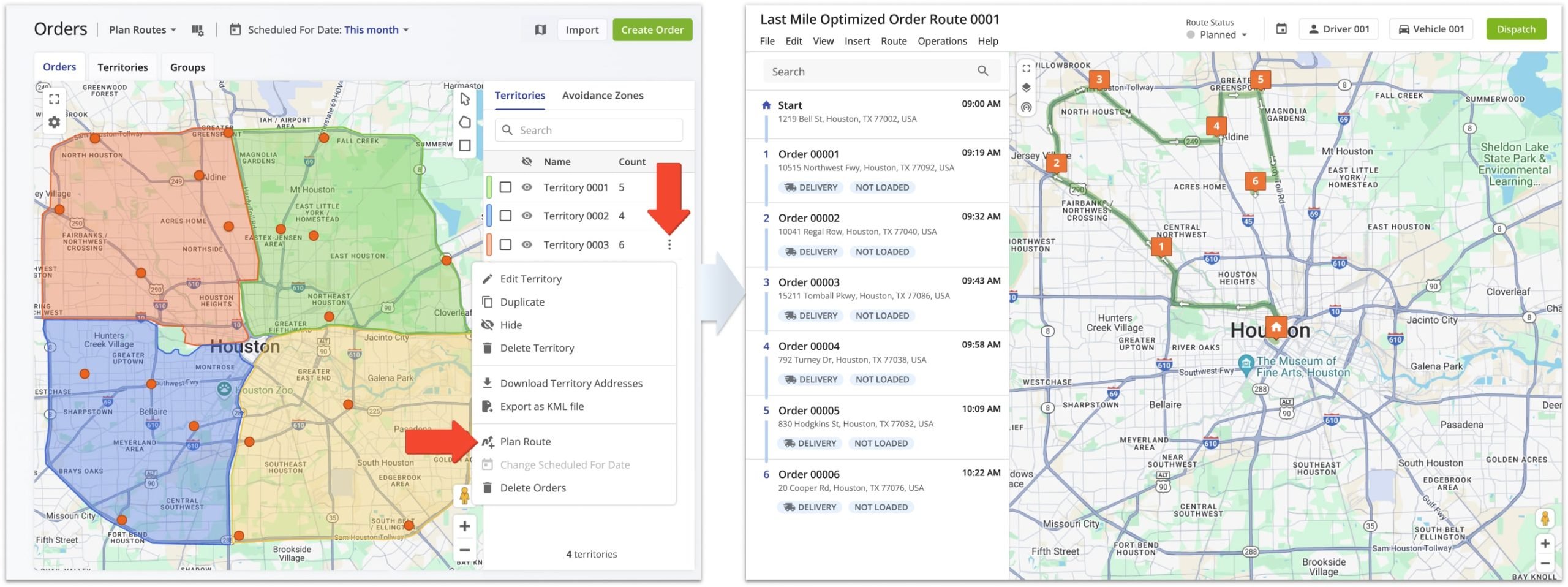
You can also plan multiple Order Territories routes without crossing territory borders. Select the preferred territories by checking the boxes next to them, click the “Bulk Actions” button, and select “Plan Individual Routes With Selected“.
Route4Me will automatically open the route planning page and import the selected orders into new routes, which will then automatically open on the Routes Map.
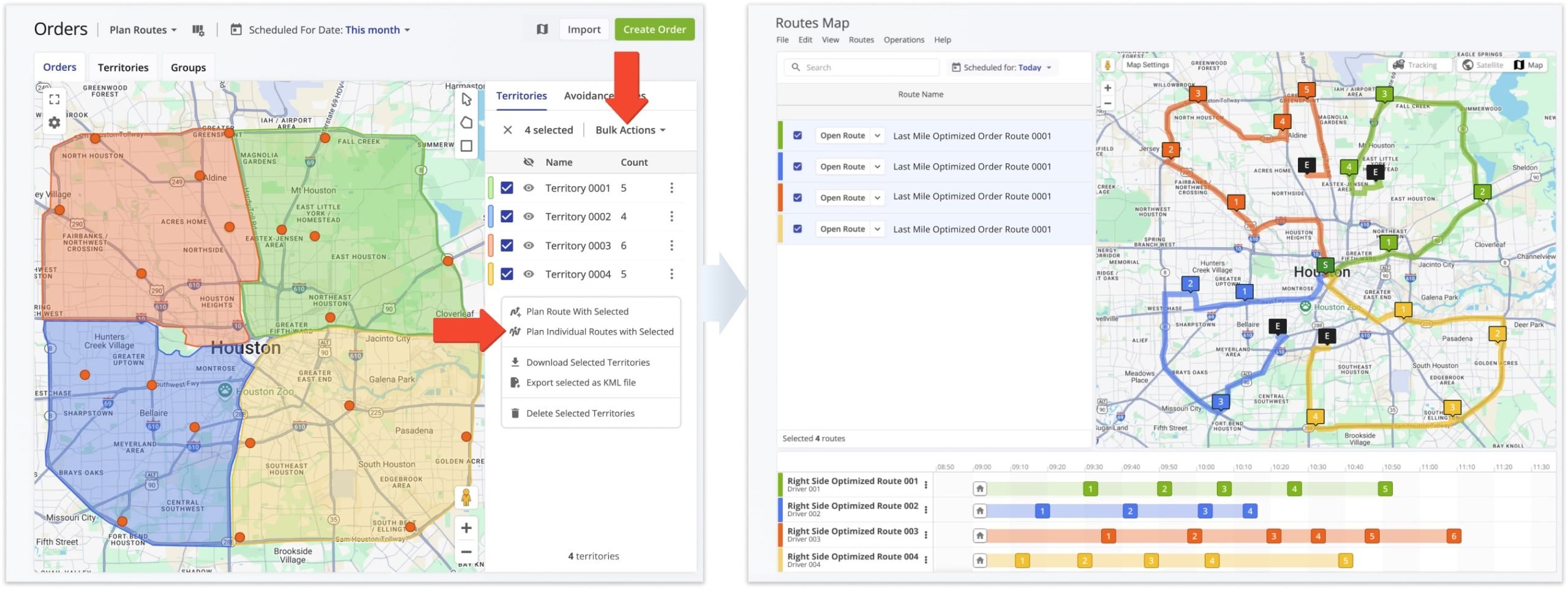
Plan Combined Route – Create Single Combined Route From Order Territories
Alternatively, you can plan a single route with orders from multiple territories directly from the Orders Map. Select the preferred territories by checking the boxes next to them, click the “Bulk Actions” button, and choose “Plan Route With Selected“.
Route4Me will open the route planning page, import the selected orders into the new route, and automatically open it in the Route Editor.
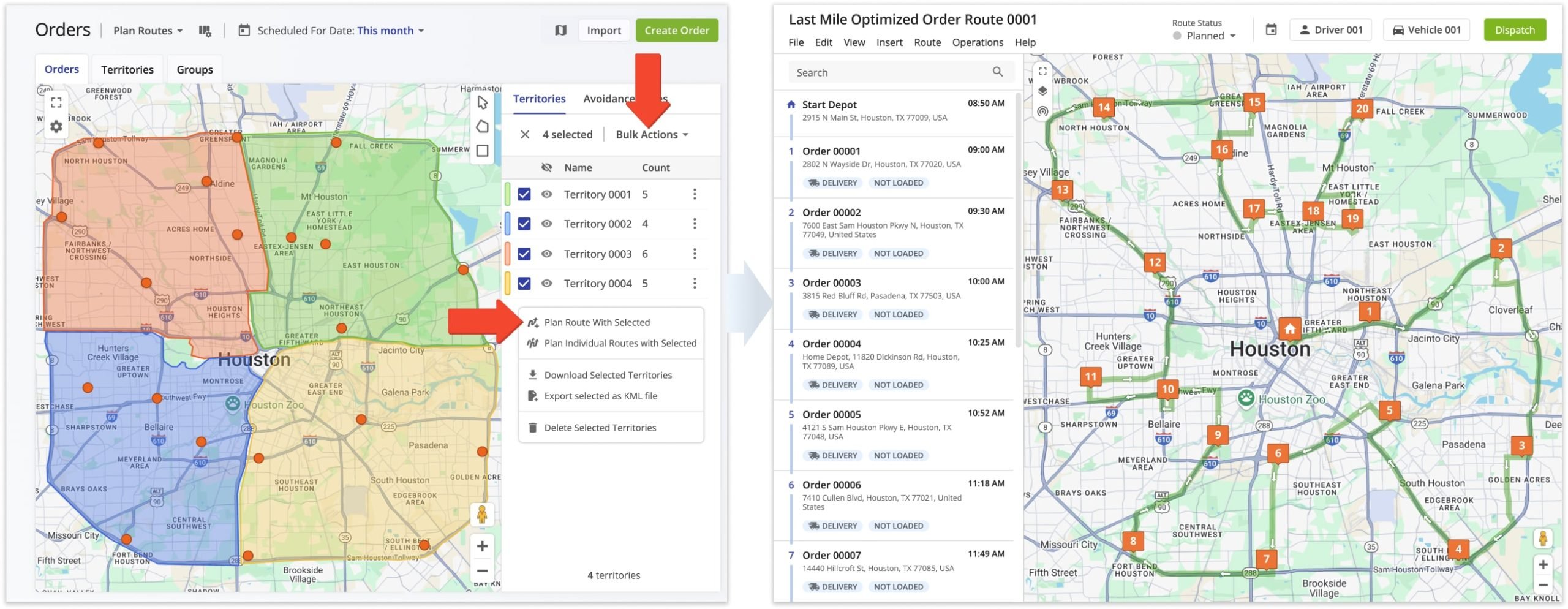
Dispatch Routes To Drivers And Track Order Progress
You can dispatch optimized routes automatically or manually. When using Optimization Profiles, the assigned driver and vehicle are automatically assigned to a route. To dispatch manually, assign a driver and/or vehicle to the route.
Once assigned, the driver can complete the route using Route4Me’s Android Route Planning App or iPhone Route Planning App, with order statuses updating in real time as the driver progresses.
Visit Route4Me's Marketplace to Check out Associated Modules:
- Operations
Advanced Team Management Add-On
- Operations
Custom Data Add-On
Last Updated:
